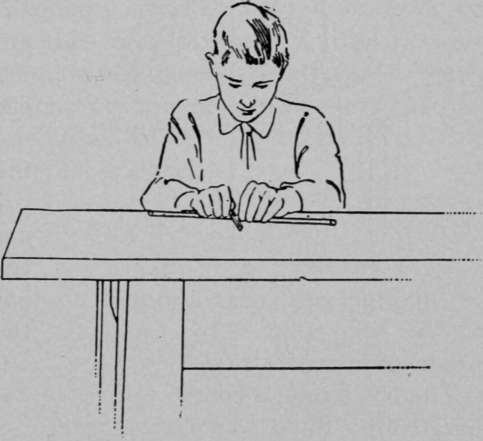The Lamp
Description
This section is from the book "Experimental Glass Blowing For Boys", by Carleton J. Lynde. Also available from Amazon: Experimental Glass Blowing for Boys.
The Lamp
The wick should be cut straight across and should project above the wick holder about 1/8 inch (Fig. 5), or a little more if you require more heat. Burn wood alcohol or grain alcohol, because they give flames without soot or smoke. Fill the lamp to within a 1/2 inch of the top only; it will burn one hour. The hottest part of the flame is not down close to the wick, as most beginners suppose, but up just beneath the tip.
Buy your alcohol at a drug store in quantities of one pint or more. When you are through experimenting for the day pour the alcohol from the lamp back into the pint bottle and cork the bottle tightly. Alcohol left in the lamp gradually evaporates and is lost.
Do not let the lamp stand with alcohol in it for any considerable time overnight for example — because fuel alcohol contains water and when it evaporates from the wick, the alcohol evaporates first and leaves the water in the wick. Then when you try to light the wick again, you will find that you cannot do so, because, of course, water does not burn. If this happens to you, take the wick out, dry it, and start the lamp again.

Fig. 5. The lamp
It is perfectly safe to use kerosene in the lamp, but it gives a very smoky flame which deposits soot on the glass and fills the air with soot particles. Your mother will object very strenuously to this because the soot particles settle and blacken everything. Burn alcohol only, at least in the house.
Experiment 2. To Cut Glass Tubing
Cut off a six-inch length of No. 2 as follows : Lay the tube flat on the table, mark the six-inch length and draw the file across the tube at this point, pressing hard enough to make a good scratch (Fig.6). Grasp the tube with both hands near the scratch, as in Fig. 7, pull apart and bend slightly. Do you find that the tube breaks across easily? Repeat this with No. 4 and No. 6 tubes.

Fig. 6. Making A Scratch

Fig. 7. Breaking The Tube
Continue to:
- prev: Experiment 1. Fun Bending Glass
- Table of Contents
- next: Experiment 3. How To Make The Edges Smooth
